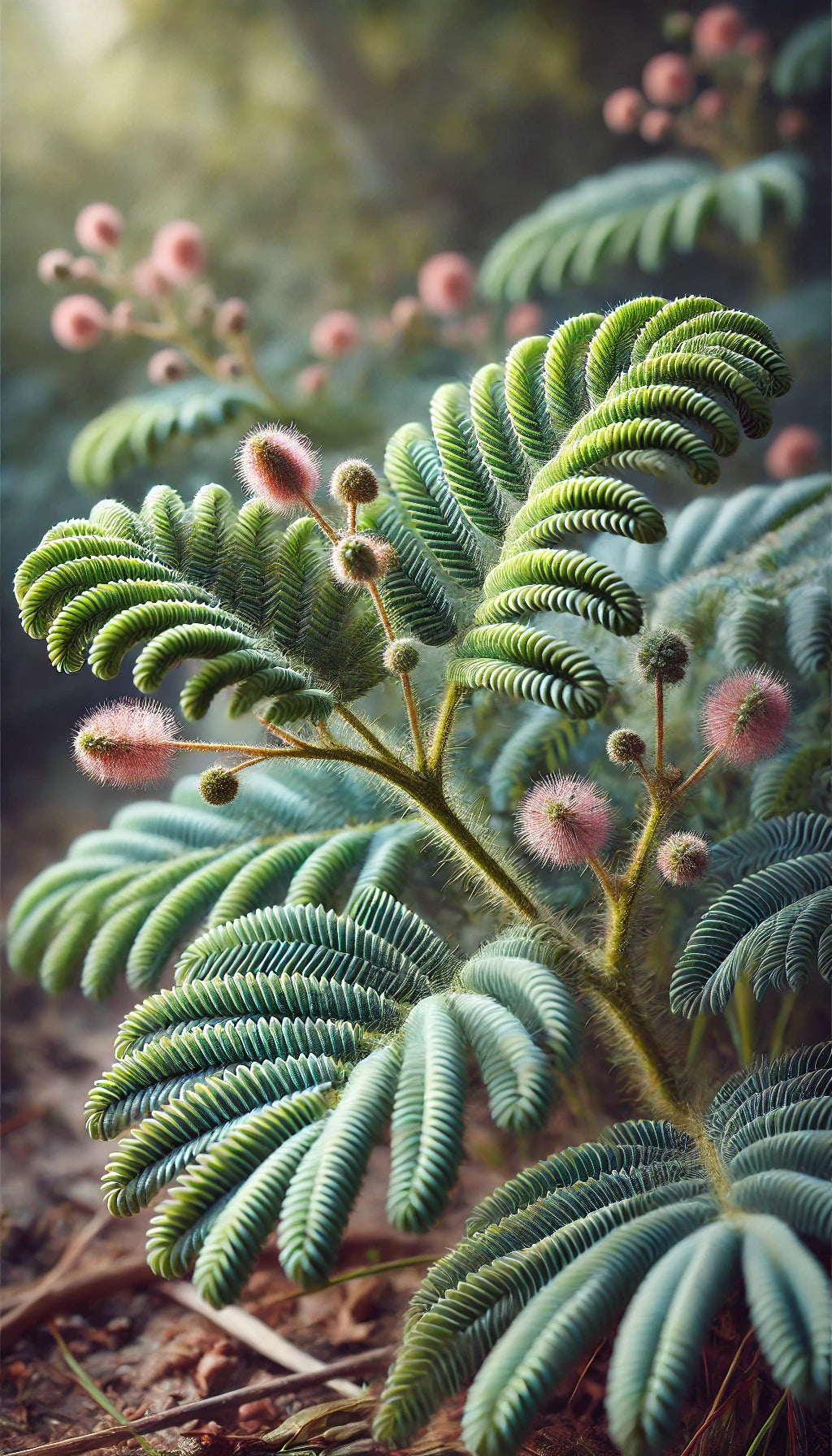What is Mimosa pudica?
Mimosa pudica is a tropical plant native mainly to South and Central America. It belongs to the legume family (Fabaceae) and is often cultivated for its remarkable ability to respond to touch. Mimosa pudica is a low-growing plant with delicate, feathery leaves that immediately fold up when touched. Its flowers are small, spherical, and display a gentle pink hue, making it not only an interesting but also a decorative plant.
How does the Mimosa pudica react to touch?
The Mimosa pudica displays a fascinating reaction to touch or vibrations: its leaves fold up in an instant. This process is called thigmonasty. The feathery leaves fold together within seconds, and the leaf stalks droop. This often makes the plant appear wilted or dead, which is meant to deter potential predators. This rapid movement acts as a defense mechanism and protects the plant from harm, as hungry animals may think the plant is no longer alive or edible.

Care and cultivation of Mimosa pudica
Mimosa pudica is relatively easy to care for as long as you follow these basic requirements:
- Light: It prefers bright, indirect light. Avoid direct sunlight, as it can burn the leaves. A partially shaded location is ideal.
- Water: Keep the soil slightly moist at all times, but avoid waterlogging, as this can cause the roots to rot. It thrives in high humidity, so it helps to mist the plant regularly.
- Temperature: Mimosa pudica grows best at 18 to 25 degrees Celsius. Make sure it is not exposed to cold temperatures or drafts.
- Soil: Use well-draining potting soil that can be slightly sandy to ensure good root aeration. This helps prevent waterlogging.
If you follow these tips, your Mimosa pudica will thrive in your home and stay healthy for a long time!
Why does the plant show this behavior?
The reaction of Mimosa pudica to fold its leaves when touched is a defense mechanism that protects it from potential threats. Researchers believe that this movement primarily serves to deter herbivores. When the leaves move suddenly, it may confuse animals or give the impression that the plant is diseased or inedible.
Additionally, this behavior may also protect the plant from environmental factors such as heavy rain or intense sunlight. By closing its leaves, Mimosa pudica reduces its exposed surface area, helping to prevent possible damage from external influences.
Use in healthcare
In humans, Mimosa pudica is especially valued in traditional medicine for its healing properties. Here are some uses:
- Calming agent: In Ayurvedic medicine, Mimosa pudica is used to provide relief from anxiety and sleep problems. The plant is believed to have a mild relaxing effect.
- Pain relief and inflammation: Extracts from its leaves and roots are used in folk medicine to relieve joint pain and treat inflammation. It is thought to have anti-inflammatory and analgesic properties.
- Skin health: In some cultures, Mimosa pudica is applied to skin problems such as wounds and irritations. The plant contains compounds believed to have antibacterial and wound-healing effects.
- Digestive health: Mimosa pudica is also used as a natural remedy for cleansing the digestive tract. The seeds are ground into a powder and are believed to help with parasites and digestive complaints.
Despite its promising effects, Mimosa pudica should only be used in consultation with professionals, as its effects and safety have not yet been thoroughly studied in modern medicine.

Mimosa pudica in nature and culture
Mimosa pudica holds a special symbolic meaning in many cultures. Because of its sensitive reaction to touch, it is often associated with modesty or reserve. Its tendency to "close up" at the slightest touch is interpreted as a metaphor for introverted or sensitive personalities. For this reason, it frequently appears in art and literature as a symbol of emotional sensitivity or shyness.
In nature, Mimosa pudica also plays an important role in its ecosystem. Its nitrogen-fixing roots help enrich the soil and improve soil quality. This makes it a valuable plant in its natural environment, as this process supports the nutrient cycle and benefits other plants.


